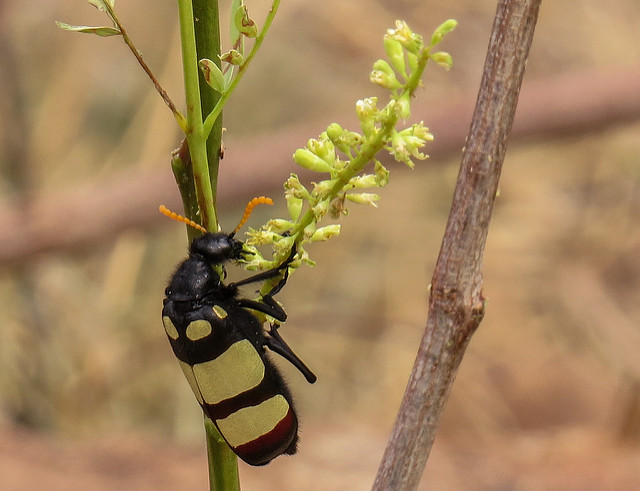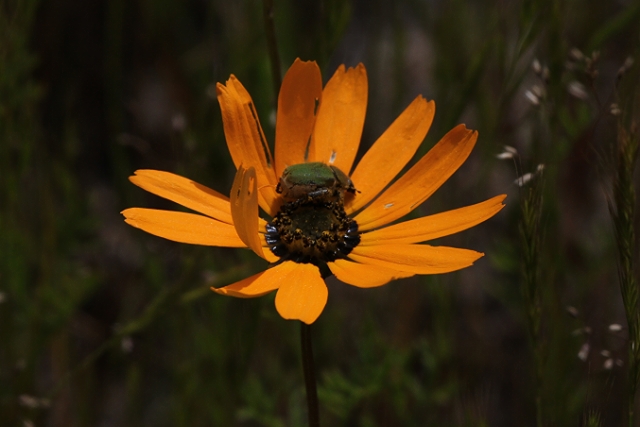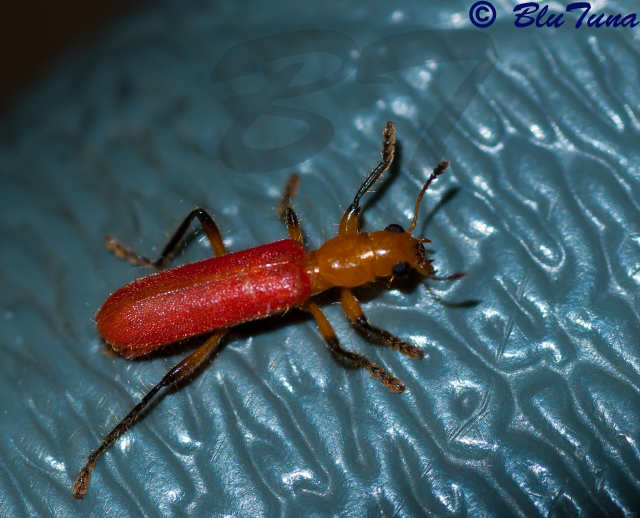Family: Meloidae. Subfamily: Meloinae. Tribe: Mylabrini
 © BluTuna
© BluTunaShingwedzi, Kruger National Park
KZN, South Africa © GlosterBirder
Description
27mm. Typical H. oculatus has black elytrae with two broad yellowish crossbands, two large anterior dorsal spots ('eyespots' - hence the species name), as well as two tiny anterior spots hidden under the humeral angles and usually only visible from the side. Some individuals may have the dorsal eyespots reduced to mere points, and sometimes all anterior spots are completely absent. Some have the anterior crossband yellowish but the posterior one partly or completely reddish, or the posterior crossband may be completely absent. Some of these variations have been named, either as full species or as infraspecific taxa. Until the group is properly revised, their taxonomic status remains indeterminate.
Recent evidence suggests that the correct name for this species might rather be Hycleus tricolor.
Taxono mic Note
This species was formerly classed as Mylabris oculata. Bologna & Pinto (2002) showed that the genus Mylabris does not occur in Africa.
Habitat
Diverse. Often seen swarming on flowers, particularly on Acacia.
Biology
Adults feed on flowers, often damaging ornamental garden plants and cotton, beans, peaches, citrus and other crops. Larvae, however, regulate the number of grasshoppers (including plague locusts) by parasitizing their egg pods.
 © steamtrainfan
© steamtrainfanPilanesberg
 © Sprocky
© SprockyGrietjie Private Nature Reserve (Balule Nature Reserve)



 © BluTuna
© BluTuna © Flutterby
© Flutterby © Tina
© Tina © Tina
© Tina © Sprocky
© Sprocky © BluTuna
© BluTuna © BluTuna
© BluTuna © BluTuna
© BluTuna